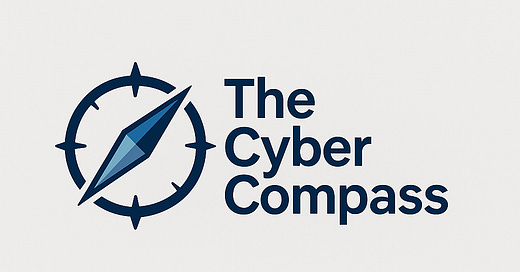🔐 Cyber Security 101: What Every Internet User Needs to Know (No Jargon Required)
A simple introduction to cyber security for all knowledge levels
Quick Summary:
Learn what cybersecurity is, the top threats to watch for, and 5 simple actions to protect your digital life—even if you're not tech-savvy.
🧠 Why Cybersecurity Matters
In today’s digital age, nearly everything we do—banking, socialising, shopping, and working remotely—happens online. The internet is a marvel of modern life, but it comes with a price: risk.
Your personal data, financial information, and privacy are constantly under threat. That’s where cybersecurity comes in—your silent shield against invisible dangers.
🔍 What Is Cybersecurity?
Cybersecurity is the practice of protecting your digital life. That includes your personal data, financial accounts, and even your reputation.
It’s not just about complex passwords or fancy software—it’s about awareness, prevention, and smart habits.
Without it, even your most basic online activity can leave you vulnerable to:
Identity theft
Financial fraud
Account takeovers
Privacy violations
And yes, this applies to everyone—not just big businesses or tech experts.
🚨 Common Cybersecurity Threats You Should Know
🦠 Malware
Malicious software that can steal, delete, or lock your data. Think: viruses, ransomware, spyware.
🎣 Phishing
Emails or websites that pretend to be trustworthy—like your bank or Netflix—but are really scams to steal your info.
🔓 Data Breaches
Hackers exploit weaknesses in a company’s system and steal massive amounts of customer data.
📰 Real-World Examples
1. Equifax Data Breach (2017)
147 million personal records exposed. Hackers exploited a known software flaw.
2. WannaCry Ransomware (2017)
A global cyberattack that locked files in healthcare and government systems, demanding Bitcoin ransoms.
These weren’t tech nerds getting duped—these were global institutions. The takeaway? If they can be hit, so can we.
🧠 5 Actions to Improve Your Cyber Awareness
🔑 1. Use Strong, Unique Passwords
Don’t reuse passwords. Use a password manager like Bitwarden or 1Password. Better yet? Try passphrases.
🔐 2. Enable Two-Factor Authentication (2FA)
Adds a second layer of security. Even if someone steals your password, they can’t access your account without a code.
👉 Want help setting it up? Read our full post: Cyber Security 102: Mastering Two-Factor Authentication
📧 3. Be Cautious with Emails and Links
Look for red flags: unexpected senders, urgency, strange links. Always verify before clicking.
🔄 4. Keep Your Software Updated
Updates fix security holes. Don’t ignore them. Turn on auto-updates wherever possible.
🛡️ 5. Use Antivirus & Anti-Malware Tools
Tools like Malwarebytes or Norton can detect and block threats before they cause damage.
✅ Final Thoughts
Cybersecurity isn’t optional anymore—it’s everyday hygiene for anyone using the internet.
The good news? You don’t need to be a tech expert.
Just a few simple habits and tools can protect you from the majority of online threats.
📬 The Compass Brief
Weekly security tips for humans—not just hackers.
👀 Spot the scams early
🔧 Fix common security flaws
💡 Learn cyber confidence—one post at a time





